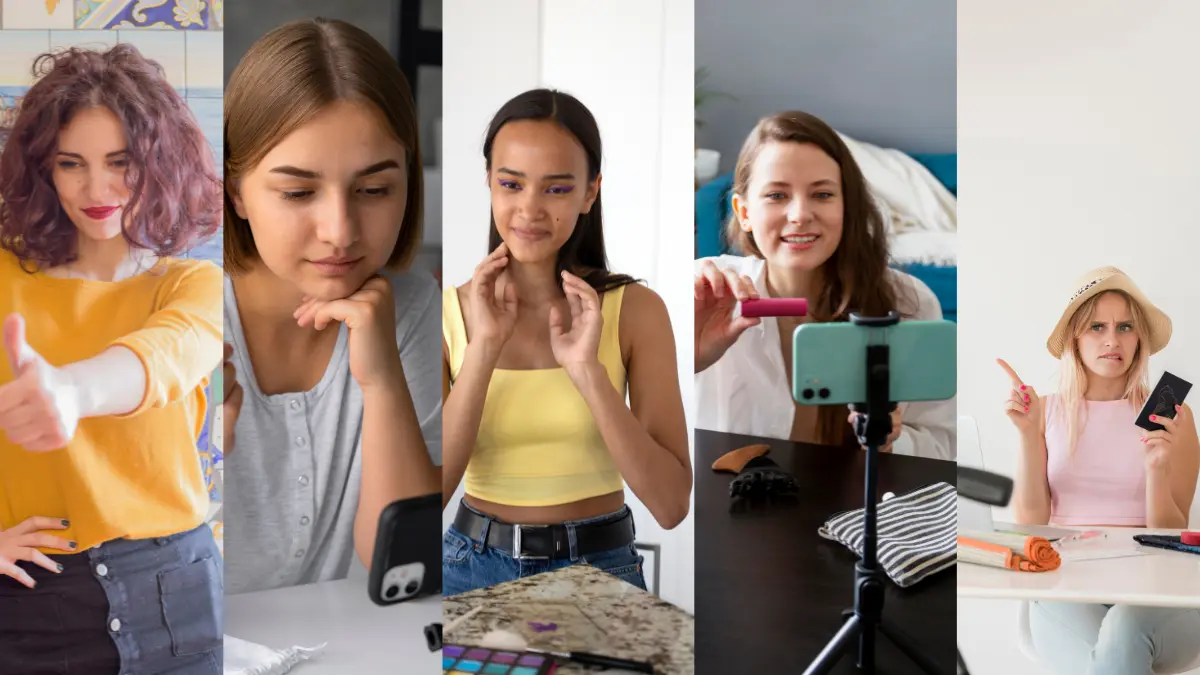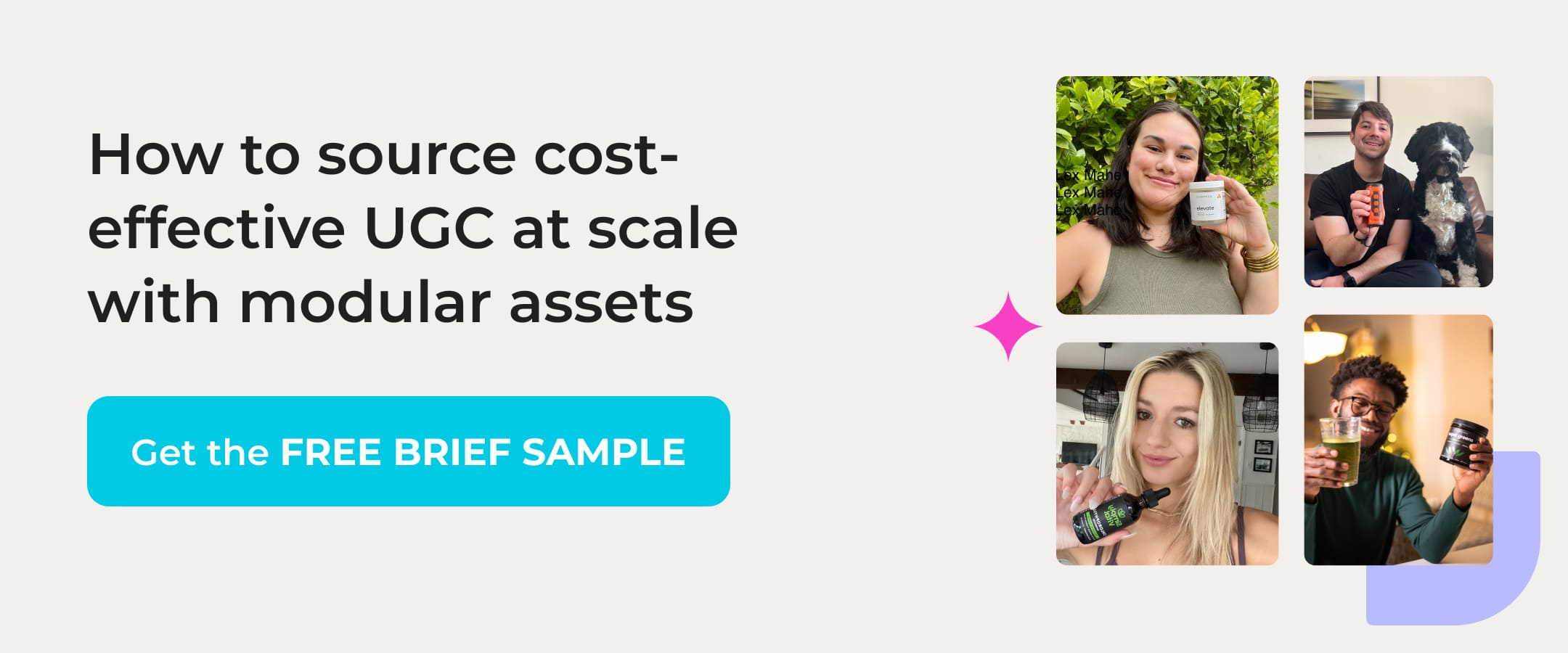Social media is rife with videos of people unboxing gadgets, showing off outfits, or sharing quick how-tos filmed in their bedroom.
These kinds of user-generated content (UGC) videos are prolific for good reason. Unlike traditional campaigns, they don’t rely on slick production teams or big budgets. They sell relatability and authenticity before they sell a product. And viewers trust them because they come from peers, not the brands themselves (who are of course going to sing the praises of anything they sell).
For marketers, this trust is second to none. It’s a way to cut through the very real problem of ad fatigue, build community, and drive sales by giving real customers their main character moment.
Different Types Of UGC Video Examples
UGC videos come in many shapes and styles depending on how customers want to share their experience. Here are the most effective types of UGC videos brands are using right now, including UGC videos on TikTok, UGC videos on Instagram, and UGC videos on Facebook.
Customer Testimonials
Testimonial videos basically pass the microphone to your customers and let them do the selling. It feels very real and authentic when someone talks candidly about how your product helped them.
Drunk Elephant regularly reposts customer reviews on TikTok, mostly short clips of people showing off their skin after using a certain product. The reason it works so well is because the message comes from real fans, which comes across as more trustworthy than something scripted.
Unboxing Videos
There’s something oddly satisfying about watching someone open a package for the first time, which is why unboxing videos seem to have exploded on YouTube and TikTok.
Brands like Apple and Samsung have massively benefitted from tech fans creating unboxing videos for every new release. Even smaller brands, like Fix Chocolate, reshare customers filming the sensory experience of opening beautiful packaging.
Tutorials and How-To Videos
Tutorials show a product in action, which helps nudge on-the-fence shoppers to buy as they can see how the product might help them. Sephora is a good example of a brand that shares customer-created makeup tutorials that feel a lot less intimidating than professional ads.
Challenges and Trends
Jumping on challenges and trends can be a great way to get a wave of UGC videos. ELF Cosmetics’ Eyes Lips Face challenge went viral on TikTok and quickly became one of the platform’s most popular branded campaigns. These videos work well because they blend into the content people are already making (and who doesn’t love to take part in a challenge?).
Storytelling and Personal Experiences
This type of UGC is more narrative-driven, with people sharing how a product fits into their daily lives. Stanley Tumblers became a viral hit because users posted stories about how their tumbler survived car accidents or kept ice frozen for days. These kinds of real-life stories are far more persuasive than any brand ad could have ever been.
Behind-the-Scenes Videos
Fans love getting a peek behind the scenes because it makes a brand feel more transparent and human. This could be anything from showing how a product is made, packaged, or shipped. Take Popflex, for example, which regularly posts videos of the drawing stage of the design process.
Comparison Videos
Comparison UGC (a.k.a. videos comparing two similar products) is great for shoppers in research mode. This is very common in the beauty space, where content creators compare two foundations or blushers or eye shadows.
Here’s an example of Lolo Lehnen comparing Fenty and Milani products for her audience.
Event Recap Videos
Fans often post clips from product launches, pop-ups, or conferences, so instead of polished event reels, you get raw, first-person footage that really shows off the vibe and energy of the event.
Nike and Adidas regularly reshare videos from sneaker drops or branded experiences.
Collaboration Videos
Collab videos are basically UGC clips co-created by brands and influencers, but they still feel pretty organic.
For example, Gymshark works with micro-creators who share real workout content featuring Gymshark gear. While this content veers a little into sponsored territory, it still feels more trustworthy than ads because it blends into the creator’s regular content.
In this video, Gymshark has partnered with fitness creator Fit By Sasha to give her followers a special discount off its latest line.
Reaction Videos
There’s nothing more genuine than a first reaction, especially in the food and beauty industries, where people film themselves trying something for the first time. For instance, Chipotle fans often film their reactions to new menu items on TikTok, and the brand then reposts the best ones.
Q&A Session Videos
Q&A sessions give you the chance to answer potential customer’s most pressing questions. This could be queries like, “does this size run small?” or “is it worth the price?”, which can help buyers get over any hesitation.
Fashion Nova regularly answers customer questions with a UGC video.
UGC Video Examples by Industry
UGC doesn’t look the same in every field. What works for a fashion brand won’t necessarily fit a mobile app or an ad agency. To show just how versatile it can be, here are some standout examples of UGC videos across different industries.
Ecommerce Brands: Product Demos & Customer Hauls
UGC is an excellent asset for ecommerce, especially those product demo and haul videos where real people unwrap, showcase, and gush about their purchases.
Take Glossier, for instance. This TikTok shows a user casually applying their product, spotlighting textures and colors in a way that’s both aspirational and approachable.
These unfiltered moments help potential buyers picture themselves using the product, which is way more persuasive than a scripted commercial.
Best types of UGC for ecommerce:
- Product demo clips showing how something looks or works in real life.
- Unboxing and haul videos that capture first impressions.
- Before-and-after transformations (beauty, home, fitness, etc.).
- Comparison videos that help shoppers choose between products.
- Everyday integration content (e.g. “Here’s how I style this in my daily routine”).
Digital Services
Digital services, like design platforms, subscriptions, or software tools, don’t usually lend themselves to flashy visuals, but UGC can be a great way to show real experiences from real customers.
Canva is a great example of a digitally native brand that regularly reshares UGC from its users, usually in the form of tutorials or design tips.
Best types of UGC for digital services:
- How-to or tutorial videos walking through a feature in a real-world context.
- Tips and hacks (e.g. “3 Canva tricks I wish I knew sooner”).
- User success stories that show results from using the service.
- Screen-record walkthroughs paired with voiceover reviews.
- Day-in-the-life integrations (“Here’s how I used X tool to finish this project”).
Mobile Apps
Apps are really all about the engagement, and UGC is kind of an extension of that. Take Duolingo, for example, which encourages users to share learning tips or funny progress snippets.
Best types of UGC for mobile apps:
- Progress update clips (e.g. “I’ve been using this app for 30 days. Here’s what happened”).
- Reaction videos showing first impressions of using an app.
- Tips and tricks created by real users to get more out of the app.
- Challenge participation (fitness apps, learning streaks, gaming apps).
- Funny or skit-style content riffing on app culture (like Duolingo memes).
Advertising Agencies
You might not think of putting UGC and ad agencies together, but it can absolutely work, especially when it leans into storytelling. London agency VML often shares UGC of events, day trips, and experiences from the perspective of its team members.
Best types of UGC for agencies:
- Behind-the-scenes office clips (brainstorms, creative shoots, agency life).
- Event recap videos filmed by staff or interns.
- Day-in-the-life vlogs from different team members.
- Employee Q&As (answering “What’s it like to work at X agency?”).
- Culture reels highlighting agency trips, awards, or volunteer initiatives.
How to Make An Effective UGC Video
Yes, you can wait for customers to tag you in a post, but you might be waiting a long time… especially if you’re a relatively small, unknown brand. Instead, increase your chances of getting UGC videos by actively encouraging and curating authentic content.
Motivate Customers on Social Media
If you want people to create videos about your brand, you have to make it easy for them.
You can do this by:
- Sharing clear prompts, like “Show us how you style our new product” or “Film your first reaction to tasting our menu item.”
- Highlighting and reposting the best content on your own channels.
- Using hashtags strategically so customers know where to post (e.g. #ShotOniPhone has powered years of UGC for Apple).
- Engaging with creators by liking, commenting, or stitching their content to show you’re paying attention.
Launch Contests and Rewards
Sometimes people just need a little extra push to create. Contests and rewards are a win-win for everyone, because you get your hands on tons of UGC and participants get a prize or the chance to win something in return.
Here’s how you can do it:
- Run simple, short-term UGC contests, like “Post your unboxing video and tag us for a chance to win.”
- Offer small but meaningful rewards, like discounts, exclusive access, free products, or even a feature on your social channels.
- Create ongoing “ambassador” or “superfan” programs where loyal customers are rewarded for consistently sharing content.
- Use limited-time challenges to build urgency and excitement.
Connect with Your Audience
Community is at the heart of UGC. People don’t just post videos because they like your product, they do it because they feel seen, heard, and connected. Building that emotional bridge is what keeps UGC flowing.
Here’s how to do it:
- Respond to UGC creators with genuine appreciation. Don’t just repost, go one step further to say thank you and engage them in conversation.
- Feature diverse voices and stories so your audience sees people like them reflected in your brand.
- Use UGC to spark two-way dialogue. Ask questions, invite feedback, and show how customer content influences your product or messaging.
- Create campaigns that are about your audience as well as your product (e.g. lifestyle challenges, storytelling prompts).
Next Steps: Turning UGC Video Ideas into Action
As you can see, you can do a lot with user-generated videos.
It might feel overwhelming trying to figure out where to start, but the first step is taking these ideas off the page and weaving them into your own content marketing.
Do this by picking one or two formats to test first. Maybe start with a product demo or a simple customer Q&A. Then, create a clear brief. Make it easy for customers and creators to participate by giving them a hashtag or a theme to riff on. Once the UGC starts rolling in, repost it, share it in your newsletter, or even run a small contest with prizes.
The key thing to remember is that UGC video isn’t a one and done thing. Instead, treat it as an ongoing marketing channel by scheduling time to curate and reshare content regularly. When you bake it into your strategy like this, you can quickly start to build a massive library of trustworthy, authentic content.
Ready to put these UGC video examples into action? Try Insense today and start connecting with creators who can make authentic content for your brand today.










